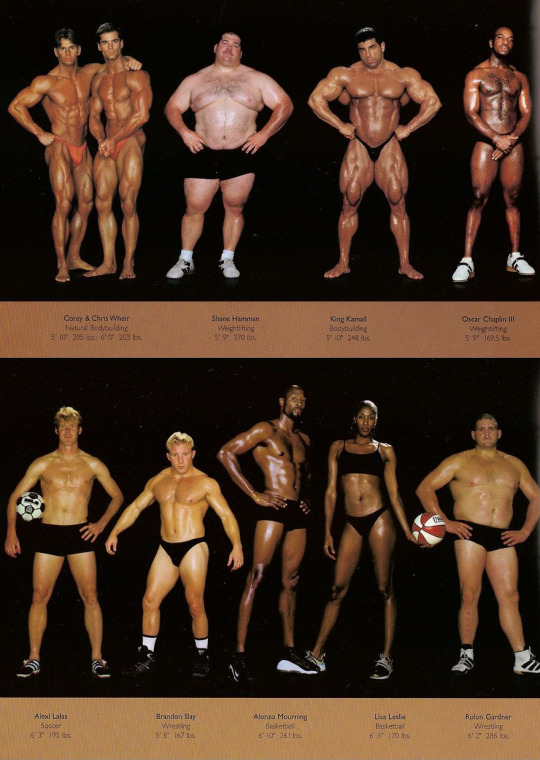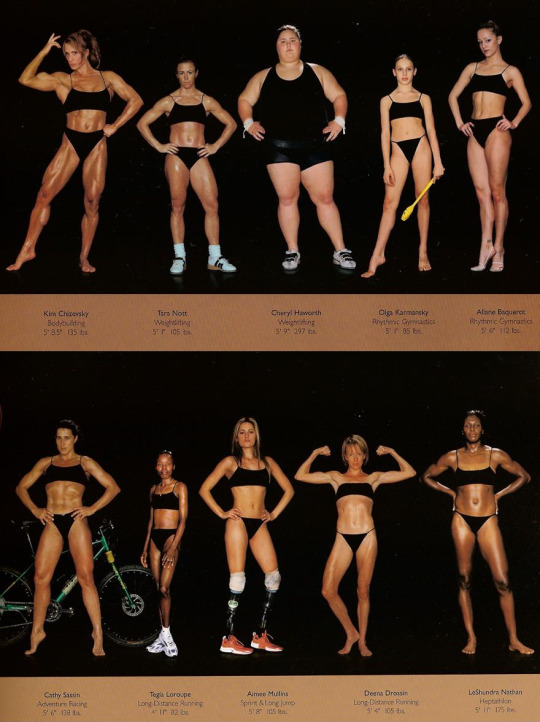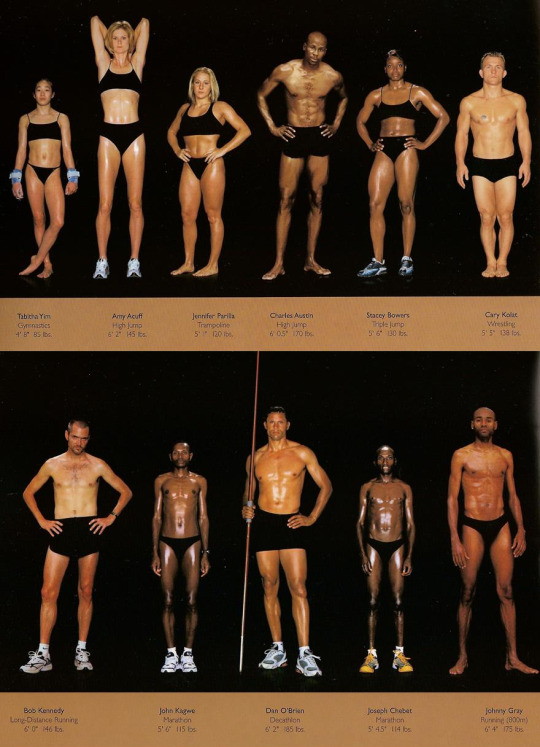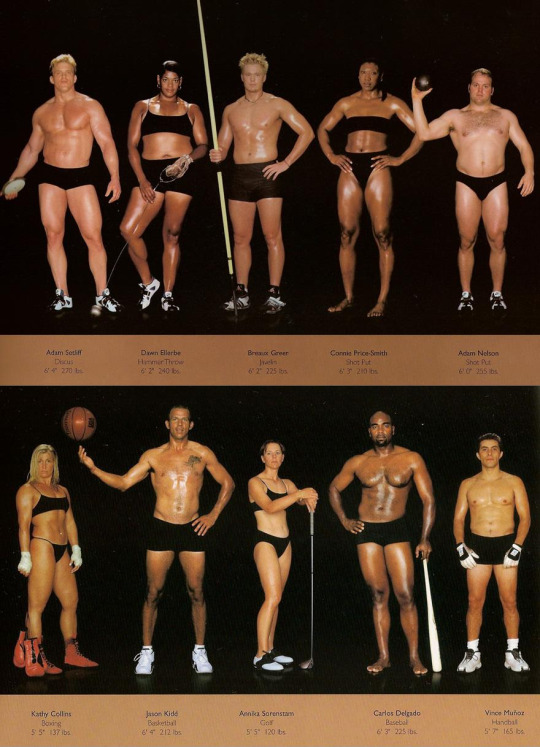I'm Alex. For most my life, I've struggled with fitting the gender and body norms that are expected of me. Realizing I couldn't be the only one has changed how I experience the world around me.
Don't wanna be here? Send us removal request.
Photo







The Body Shapes of the World’s Best Athletes Compared Side By Side
329K notes
·
View notes
Link
This talk is inspirational because it describes arriving in a space that is yours. Learning to be yourself and accepting yourself for who you are on the inside will greatly improve your chances of a happy and authentic life.
9 notes
·
View notes
Photo

Intersectionality and queer identities go hand in hand
10 notes
·
View notes
Link
This is along with my thinking of inclusion. We should normalize what it means to be queer in order to focus our attention on including those outside of society’s standards.
7 notes
·
View notes
Video
youtube
Lee Mokobe talks about what it feels like to fall outside of gender norms. They discuss how supporting your body is like supporting your house; you must take care of your foundation.
16 notes
·
View notes
Text
inclusion
One of the most shocking things that happened to me when I first came out was the realization that even LGBTQIA circles have their own ideals. On the outside looking in, it’s easy to assume that LGBTQIA people would be accepting of all bodies and gender expression but unfortunately this simply isn’t the case.
I would like to see a more direct and honest approach towards intersectionality and inclusion in the LGBTQIA community. Over the past few decades there have, of course, been instances when the different identities have come together to accomplish society-wide change. Gay marriage is a great example of this. Without the efforts that many trans* people made, gay marriage would have never been possible.
Another example of how the LGBTQIA community might be able to be more inclusive is by accepting the bodies and experiences of those who do not fit the norms of our community. Dividing gay people in to twinks, bears, fairies, etc., is harmful because if you somehow fall outside of these categories, where do you fit in?
The same can be said for androgynous and genderqueer individuals. In their guest essay in Things No One Will Tell Fat Girls Sam Dylan Finch writes that androgynous and trans* bodies are often told to fit similar standards that cis-gender people do. Obviously, these standards are harmful because they exclude a vast majority of the people who do not fit into the categories perfectly.
In a community that has long been on the outskirts of traditional patriarchal society, it is a shame that queer folks can’t adopt new ideals of masculinity, femininity and other identities that transcend those that are failing our current culture. It is ideal to imagine a society that would erase all standards, but perhaps our community can flagship changes in a similar fashion that gay marriage has brought attention to other queer issues.
11 notes
·
View notes
Photo

Sometimes I like making people wonder why? Often, I can achieve this by wearing a flamboyantly pink or bright color.
6 notes
·
View notes
Text
body positivity
As a student at PSU, I have spent the last semester exploring the topics of gender and body image. In the class, we have read a number of essays from The Politics of Women’s Bodies and Things No One Will Tell Fat Girls. Through these readings, I have had my eyes opened to the issues that our society faces with body image. As I explore the realm of what it means to be genderqueer or androgynous, it is important to keep in mind that we are all allowed to accept our bodies for what they are. This means accepting them TODAY for WHAT THEY ARE.
In Things No One Will Tell Fat Girls, Jes Baker does an excellent job of describing why it is important to develop a healthy body image for a happy life. You can spend your whole life miserable about the body you can never achieve, or you can accept your beautifully unique body for what it is and live your best life. Of course, loving our bodies is not easy. It is a complex process of developing self-awareness. But, in the end, body positivity is helpful for everyone because it allows us more expression and to love our own skin. Through the act of loving your self, you will experience more confidence with the people you interact with on a day-to-day basis.
You may be wondering what body positivity has to do with being genderqueer. The truth is, being genderqueer is accepting yourself for who you are outside of social definitions. Because you cannot really label yourself as man or woman, you must be radical in accepting your self outside of these definitions. Body positivity is parallel to this type of thinking. Ultimately, the goal of body positive thinking and genderqueer identities is to free yourself from the social pressures to fit idyllic categories. The more you educate yourself on these issues, the more you will gradually learn there is a large history of people living outside these boundaries.
For more inspiration for body positive thinking, I would suggest picking up a copy of Things No One Will Tell Fat Girls. It is an engaging and humorous read on some very serious topics. Its issues are very relevant to today’s society and it features many different guest writers who bring a unique and powerful voice to the topic of body positivity.
3 notes
·
View notes
Text
about me
I came out in 2010, a year after my freshman year at College of Idaho. I was anxious about it, of course. For the most part my family is Mormon and the act of telling your family you’re gay is almost just as bad as revealing you murdered a complete stranger.
Luckily for me, the process didn’t result in my parents disowning me or throwing me out of the house. Our relationship changed. But according to most of the gay people I knew and talked to about coming, this was normal. After all, for twenty years my family thought I was going to marry a woman, have a family, and lead a pretty typical Mormon boy life. The shock of that idea crumbling was crippling to my parents and even though I wasn’t disowned, I knew I was choosing a more solitary life. I never knew if my family was going to fully accept me for who I am.
As I grew older and away from the teachings of the church and my parents, and truly began to question the social structures that have kept my community restrained for so long, I encountered gender in ways I hadn’t before. Suddenly, the line between what was masculine, and what was feminine seemed less defined than before. Not just in theory or in philosophy. It wasn’t until I returned to college, this time at Portland State University, when I really came to understand just how constructed gender really is.
The truth is, I think I will always be a confusing ball of indefinable gender characteristics. Sometimes, I feel comfortable with my male-presenting self. Other times, I feel hyper-aware of my male-ness and become uncomfortable in my skin and wish people would see that I am not just a gay man, but something outside and elusive. I have grown comfortable with the idea that this questioning may be a lifelong journey--something that I can pass on to other generations who will undoubtedly question their gender.
6 notes
·
View notes
